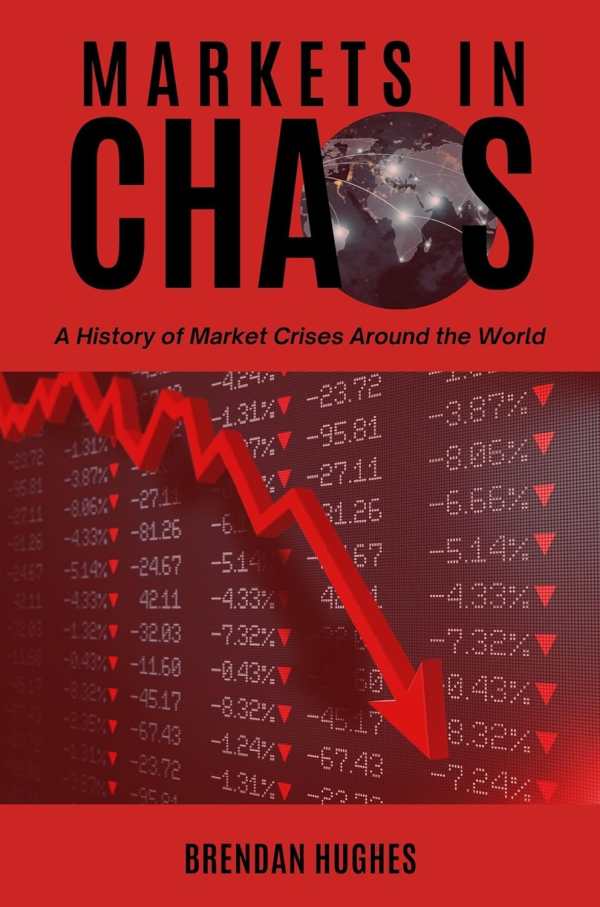Markets in Chaos
A History of Market Crises around the World
Economic history has tended to repeat itself—but there may be a solution, according to the intricate, informative book Markets in Chaos.
Brendan Hughes’s reflective economics text Markets in Chaos invites investors to learn from past financial crises and evaluate future risks.
Through eleven case studies of different market crises from world history, this book aims to prepare investors for the next market catastrophe, helping them to make informed financial decisions. Its core chapters each center on a single country and crisis, including hyperinflation in Zimbabwe, the Lost Decade in Japan, and the impact of COVID-19 in the United States. Each chapter includes background information and covers the market impact, macroeconomic impact, and effect on businesses. Chapters describing more ancient crises lack the latter section due to a scarcity of information.
The book pulls from the work of economists, academic research, books on finance history and personal finance, and the examples of famed investors including Warren Buffett to explain market crises in depth and make projections for the future. Following its case studies, it focuses on the contemporary state of investing, showing how historical lessons can be used to evaluate risk. Throughout, the book builds upon its previous material well, drawing comparisons between crises and explaining how disparate events are similar, dissimilar, or interconnected. For example, the chapter on the Latin American debt crisis follows the chapter on the United States energy crisis, whose oil price shocks partially led to the situation in Latin America.
With case studies spanning two millennia and countries from Europe, Africa, Asia, and the Western Hemisphere, this is a comprehensive global history of market crises that touches on key topics with clarity, including inflation, deflation, high debt, bubble bursts, and private money printing. In addition, the necessary context is provided throughout, as where the book describes the origins and purpose of the EU when discussing the euro, and with a brief synopsis of World War I that comes before its coverage of Germany’s postwar financial crises. But while context is included in many instances, there are also times where the book chooses to narrow its focus on the economics of a crisis to its detriment, as with an evaluation of whether the United States was wise to impose sanctions on Russia for invading Ukraine that focuses on economic repercussions alone. Hedging statements, including “I think” and “I believe,” also undermine the book’s delivery.
The book maintains throughout that its purpose is not to train investors to predict the future but to learn from history and better evaluate risk. As the case studies progress and the book draws parallels between crises, history begins to repeat itself, and the book’s central claim of the interconnectivity between crises becomes increasingly convincing. The book’s growing confidence in its argument also leads to a tone of frustration: “Have we learned nothing from the past?” It’s a society-wide shortcoming to which a remedy is proposed in the book’s final chapters.
The financial history book Markets in Chaos uses past economic crises to provide insights into future market trends.
Reviewed by
Hannah Pearson
Disclosure: This article is not an endorsement, but a review. The publisher of this book provided free copies of the book and paid a small fee to have their book reviewed by a professional reviewer. Foreword Reviews and Clarion Reviews make no guarantee that the publisher will receive a positive review. Foreword Magazine, Inc. is disclosing this in accordance with the Federal Trade Commission’s 16 CFR, Part 255.

